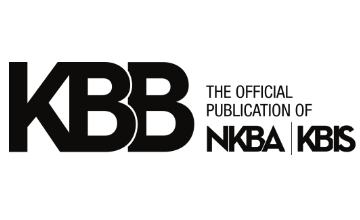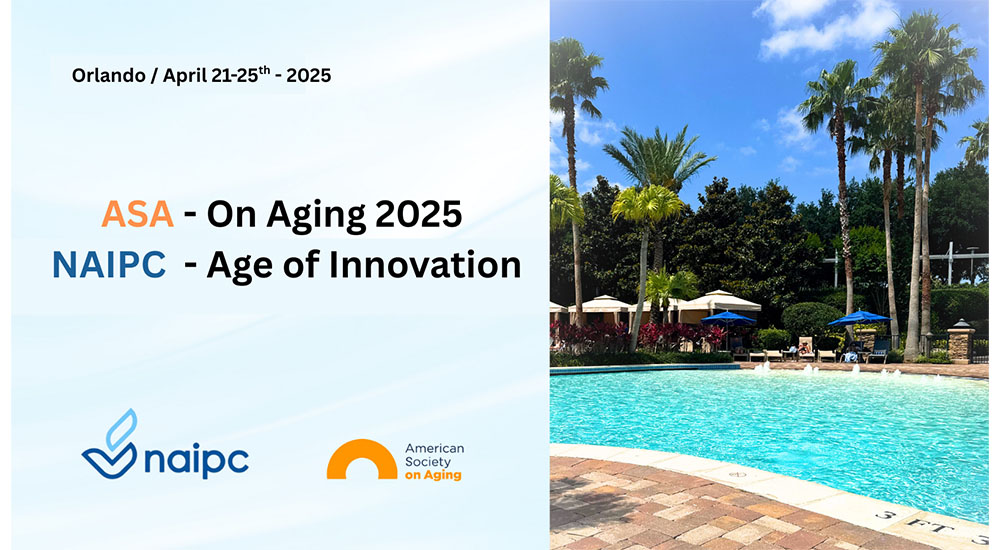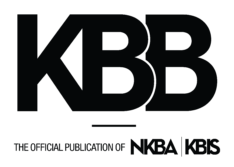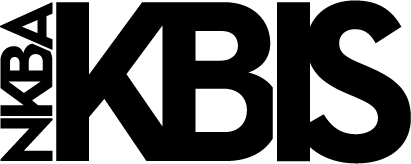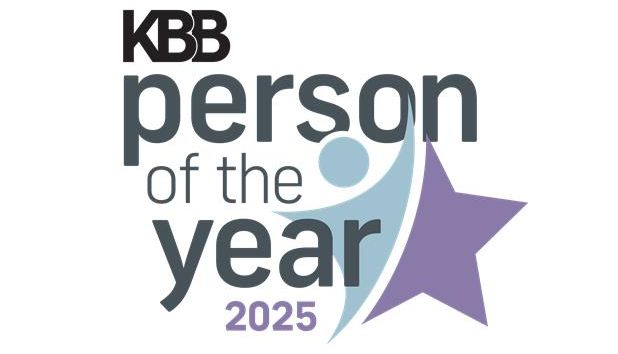When SENSTEC launched last year, one of my first priorities was to identify exactly who our product could truly make a difference for. With bathroom safety being such a crucial part of maintaining independence, it became clear very quickly that one of the strongest groups was people growing older who wanted to remain in their own homes. I soon became very familiar with the term aging-in-place.
To learn as much as I could about this demographic, I joined the National Aging In Place Council (NAIPC) and in April found myself immersed in two consecutive conferences at the Hyatt Regency hotel in Orlando, Florida: The American Society on Aging (ASA) – On Aging 2025 and the National Aging In Place Council (NAIPC) – Age of Innovation.
Over the course of a few days, I gained fresh insights into the technologies and strategies that make aging-in-place not just possible, but a thriving niche. Here’s what stood out for me and why every kitchen and bath professional should take note.
ASA – On Aging 2025
Firstly, the ASA conference is huge. It’s a four-day event with many, many speakers, with multiple sessions at the same time and lots of overlapping. It’s impossible to see and hear everyone. Attending this conference is about being highly strategic. I focused on sessions that resonated with me personally or greatly enhanced my understanding of aging-in-place.
One of the most enlightening talks for me demonstrated how healthcare knowledge and home technology can easily work hand-in-hand. Janet Engel, who also spoke earlier this year at KBIS during the Voices from the Industry (VFTI) sessions, introduced “Bridging the Gap: Healthcare, Home Tech and Successful Aging.”
Through her work with DwellSafe AI, she demonstrated how artificial intelligence can support safer, independent living for older adults. This technology allows users to submit videos of rooms they would like assessed. These rooms are then reviewed alongside a short health questionnaire. Once this information is gathered, a clinical team will interpret the data and provide the user with a personalized safety report filled with practical recommendations to reduce fall risks. The whole process is carried out remotely, making it a fast, accessible way to support aging in place. For me, this was a real example of how AI, when used well, can quickly give people the information they need, right at their fingertips.
One of the more engaging ASA conference sessions I took part in was a round-table hosted by the ACL Innovation Lab.
Instead of focusing solely on large-scale fall-prevention programs, the session explored a more flexible, community-based approach. The ACL has identified key elements that have been shown to help reduce falls among older adults, which organizations can adopt even if they don’t have the resources for full programs. I loved that this was a more interactive session, allowing everyone to add their own take. In a room filled with over 30 participants, it was a great
experience to be part of a conversation of this size with various points of view crisscrossing the table. It really was more of a collaboration than a conversation.
The final session I attended, and the last of the ASA conference, was again a round-table, this time around the Food Is Medicine movement.
This session was a personal interest of my own and was led by Uche Akobundu and Carter Florence from Meals on Wheels America, both nutritionists, clinicians and community advocates. Through discussion, we explored how targeted meal programs can reduce hospital re-admissions, how food can manage chronic diseases and improve overall quality of life. This is especially true when paired with home assessments and social support networks.
I was really taken by how a simple shift in meal planning can give profound health outcomes, and therefore the way in which kitchen design, from countertop heights to appliance placement, can positively help older adults to participate actively in meal preparation.
My lasting impression of the ASA conference was its sheer scale. It reinforced a key lesson for me about focus and strategy. Pick your niche, network with the people who share your priorities, and bring those learnings back to your own work.
NAIPC – Age of Innovation
The following morning, I attended the NAIPC’s Age of Innovation conference as a proud member. President Israel Cross opened by reminding attendees that the National Aging In Place Council rests on five pillars – Housing, Health & Wellness, Finance, Transportation and Social Interaction – and a sixth pillar, Membership, which binds them all together. That framework shaped every session that followed.
This quote by Cross was a key takeaway from the conference: “Kitchens and baths are true intergenerational hubs – preparing meals together and sharing recipes, caregivers assisting loved ones, and children exploring safely. Universal design features like height-adjustable counters, grab bars and hands-free controls allow these spaces to flex for every age and ability. The National Aging in Place Council mission champions these innovations, transforming kitchens and baths into shared spaces of comfort and confidence for aging adults.”
Bill Packer of Longbridge Financial kicked things off with “Finding ROI in AI”, and Jeff Salter from Caring Senior Service followed quickly after, diving even deeper into the AI topic with “Demystifying AI for Small Teams”.
The topic of AI will be relevant at every event we attend going forward, regardless of the theme or sector. It will be touching every part of our lives, but like anything, it can be a force for good or bad, depending on how it’s used. A word of warning came from Bill to be careful and mindful of the information we put into AI. Once you input information, you have no control over where that information goes or where it is kept. Far-fetched? Overly concerned? I don’t know. It made me pause and think. I took it as good advice.
In “Perfect Pitch: Mastering the Art of Sales & Marketing”, Simon Close of 24Hour Home Care reminded us that no matter how compelling our products or services are, it all comes down to solving a problem.
He broke his ideal pitch down into three steps:
• Purpose – Why this meeting matters. (Pain)
• Process – This is how I’ll address it. (Fix)
• Pay-off – This is what you’ll gain. (Benefit)
He left us with the rule of thumb that the pain of change should feel less painful than the pain of staying the same.
Scaling was the theme of Sean Fitzgerald’s talk, “Big Business, BIG Impact”. As president of TruBlue Home Service Ally, he shared his franchising journey, from establishing systems and brand standards to rigorous training protocols. His advice: document every process, invest in strong leadership development, and cultivate a culture that values both quality and consistency.
Architect Aaron Murphy of Forever Home energized the room with his talk on “The Future of Aging in Place Environments”. His passion for proactive design, adapting homes before a crisis strikes, resonated deeply. He showcased adaptable fixtures, lever-style hardware and universal design principles that look great and are functional for people of every ability.
On the marketing side, Dana Keilman of Morning Light Strategy talked about the value of data in her presentation, “The Future Is Old”. She emphasized that by properly segmenting your market through market research, companies can avoid one-size-fits-all campaigns that completely miss the mark.
The final talk at the conference was by Jim Greatorex of GreatorExperience: “Home Access Consulting: Home Modifications for Aging in Place”. His talk encouraged bridging the gap between contractors and medical professionals, urging contractors to have closer ties with occupational and physical therapists so that every grab bar, ramp or roll-in shower delivers both safety and dignity.
The conference saw many other speakers, and like the ASA, some talks overlapped, so it was impossible to attend them all, but that was okay; again, it was about planning and strategy. The NAIPC conference felt more intimate than the ASA. Conversations flowed easily, and every speaker encouraged open-floor engagement.
That final evening saw an NAIPC awards dinner held at a local restaurant, which was refreshingly informal. Again, it was very intimate and allowed members to celebrate each other and the community impact of the organization.
“NAIPC has identified more than 72 distinct service sectors within the aging-in-place marketplace, and we were thrilled to bring many of them together under one roof at the Age of Innovation Conference,” said Tara Ballman, executive director, NAIPC. “This gathering of industry leaders promoted cross-sector collaboration, bridging gaps between previously siloed disciplines. The atmosphere was one of shared purpose and enthusiasm as participants exchanged meaningful insights and best practices. I am more optimistic than ever about the future of the aging-in-place movement and the profound, positive impact it will have on the lives of older adults.”
What Does All This Mean for Kitchen & Bath Professionals?
What is the key takeaway for those designing and installing kitchens and bathrooms? Aging-in- place is not a niche. Instead, it’s very much here and becoming mainstream. As the population ages, all clients will expect spaces that can adapt gracefully to changes in mobility, vision and strength. Inclusive design enhances comfort for everyone, regardless of age or ability, from adjustable height countertops to slip-resistant flooring, from automated lighting to hands-free faucets.
This is where my own work with SENSTEC comes full circle. Our patented anti-slip shower pans, for example, offer traction that can prevent falls without looking clinical or industrial. They integrate seamlessly into modern bathroom designs, giving homeowners both style and safety. Mentioning this isn’t meant as self-promotion but rather a solid example of how thoughtful product design directly supports the pillars of Housing and Health & Wellness.
Attending both On Aging and the Age of Innovation left me genuinely inspired. Never have I been surrounded by so many individuals who care – truly care, about the work they do and the people they serve.
Aging in place is about dignity, independence and quality of life. It’s never too early or too late to start designing with those values in mind.
To learn more about the NAIPC and its work, visit https://ageinplace.org
—By Mark Conacher, managing director, SENSTEC and a 2024 KBB Praiseworthy Pick.
